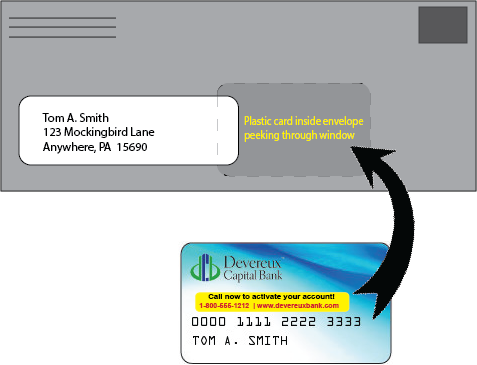Direct Mail Success is in the Cards
Our world is full of digital clutter. While marketers are allocating a larger share of their budgets to digital, there is still a place for (less cluttered) traditional marketing. In fact, an omnichannel approach, one which incorporates both digital and traditional tactics, can actually lead to superior results since you have a better chance to stand out in the less crowded traditional marketing space. Direct mail, in particular, is a good bet since it is the preferred method of communication among consumers. According to Epsilon’s2012 Channel Preference study, 62% of American respondents actually enjoy checking their mailbox for mail.
Digital clutter makes direct mail more effective. According to the Response Rate Report from the Direct Marketing Association, the average direct mail response rate stands at 3.40% compared to the average email response rate, which 0.12%, making it more effective than digital channels.
How Direct Mail Measures Up
Direct mail response rates transcend other forms of digital communications. The average direct mail response rate stands at 3.40% compared to the average email response rate of 0.12%, according to a June 2012 DMA report. And when you add a card to your direct mail piece, the results improve significantly. Since a plastic card mimics the look and feel of an authentic bank card, recipients are quick to open your correspondence and respond to your offer.
How to Use a Card in Your Direct Marketing
Personalization. When you add personalization to both your card and the letter to which it is attached, you can better engage the recipient. Embossing the card with the recipient’s name and (faux) account number helps to create the illusion that it is something that needs their attention and should be opened immediately to further investigate.
Positioning. To entice recipients to open your mail piece, position the card just inside the envelope window. Again, just a peek of the card and account number will help to prompt immediate action. Curious minds want to know!
Labels. Use a brightly colored label to create a sense of urgency and draw attention to your call-to-action. Phone numbers, websites and PURLs (personalized URLs) work well in this space.
Information. Add important information to both the card and label so that it can be saved and referenced at a later time. The card becomes a portable reminder to make a call or sign-up for a product or service.
61% of U.S. respondents like to be able to refer back to info received in direct mail, according to Epilson’s 2012 study.
The Benefits of Card Marketing
Adding a card to your direct mail campaign is actually more affordable than you may think, and it provides a higher return on your investment. Both B2B and B2C marketers can reap the benefits of adding a card to their direct mail campaigns.
When you add a card to direct mail, it can:
- Increase the perceived value and can easily double open rates
- Serve as a teaser by positioning it just inside the envelope window
- Be saved and referenced long after the delivery date
- Be personalized to improve engagement and maximize results
Including direct mail in your marketing mix can provide you with another (less crowded) avenue to market your products and services. And if you want your mail to really stand out in the mailbox, add a plastic card that can be felt through the envelope. It will increase lift and improve ROI.